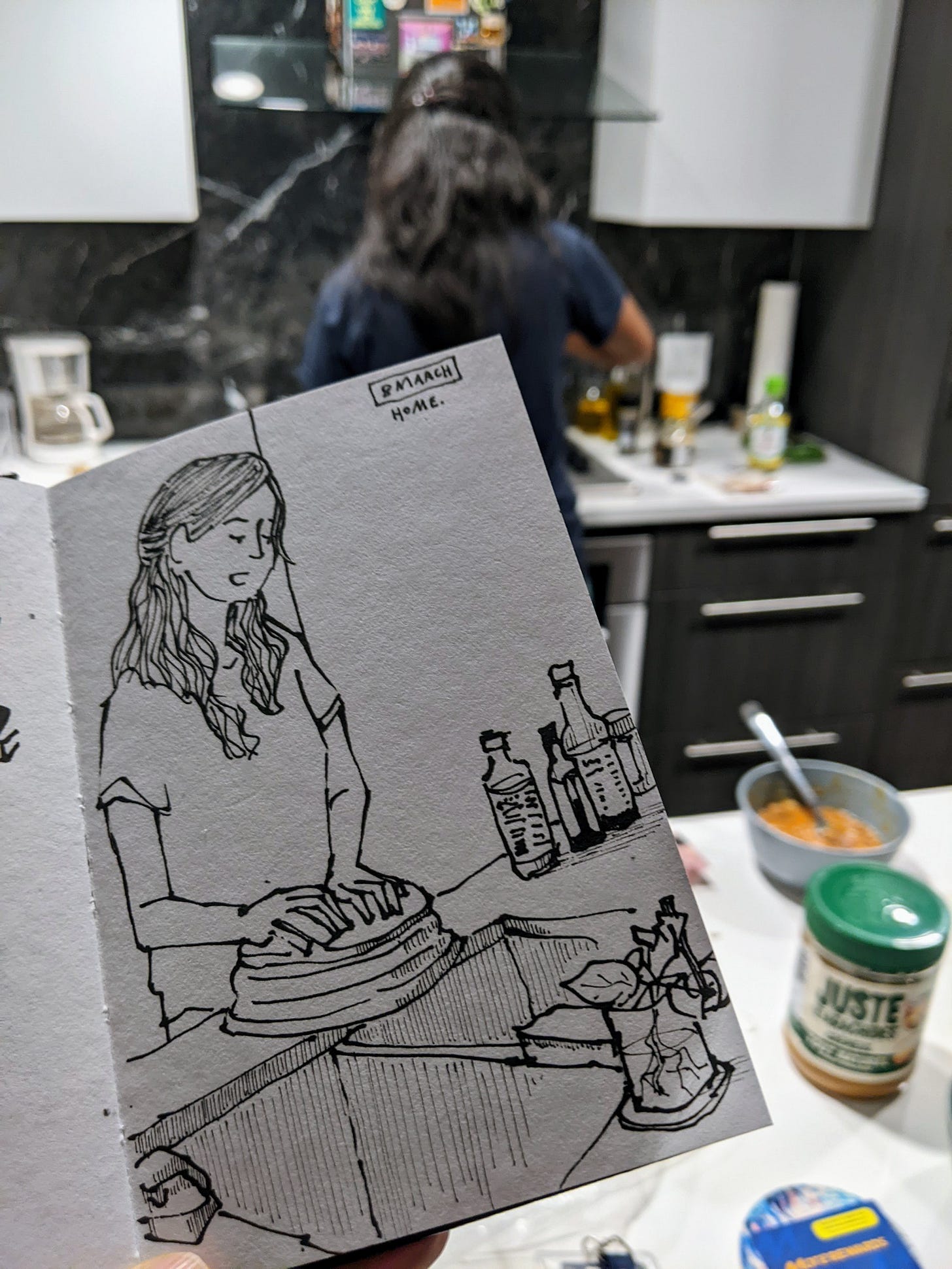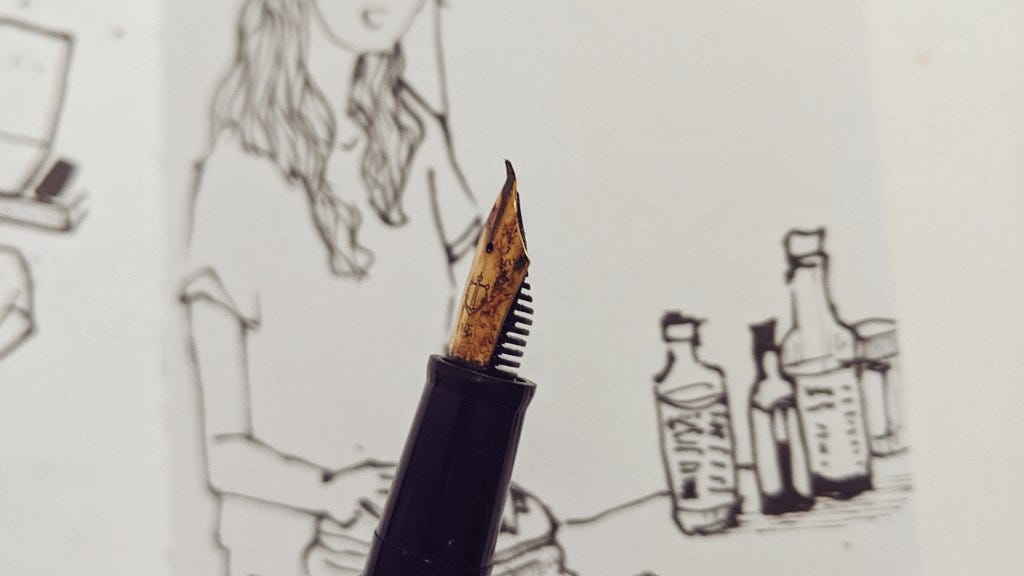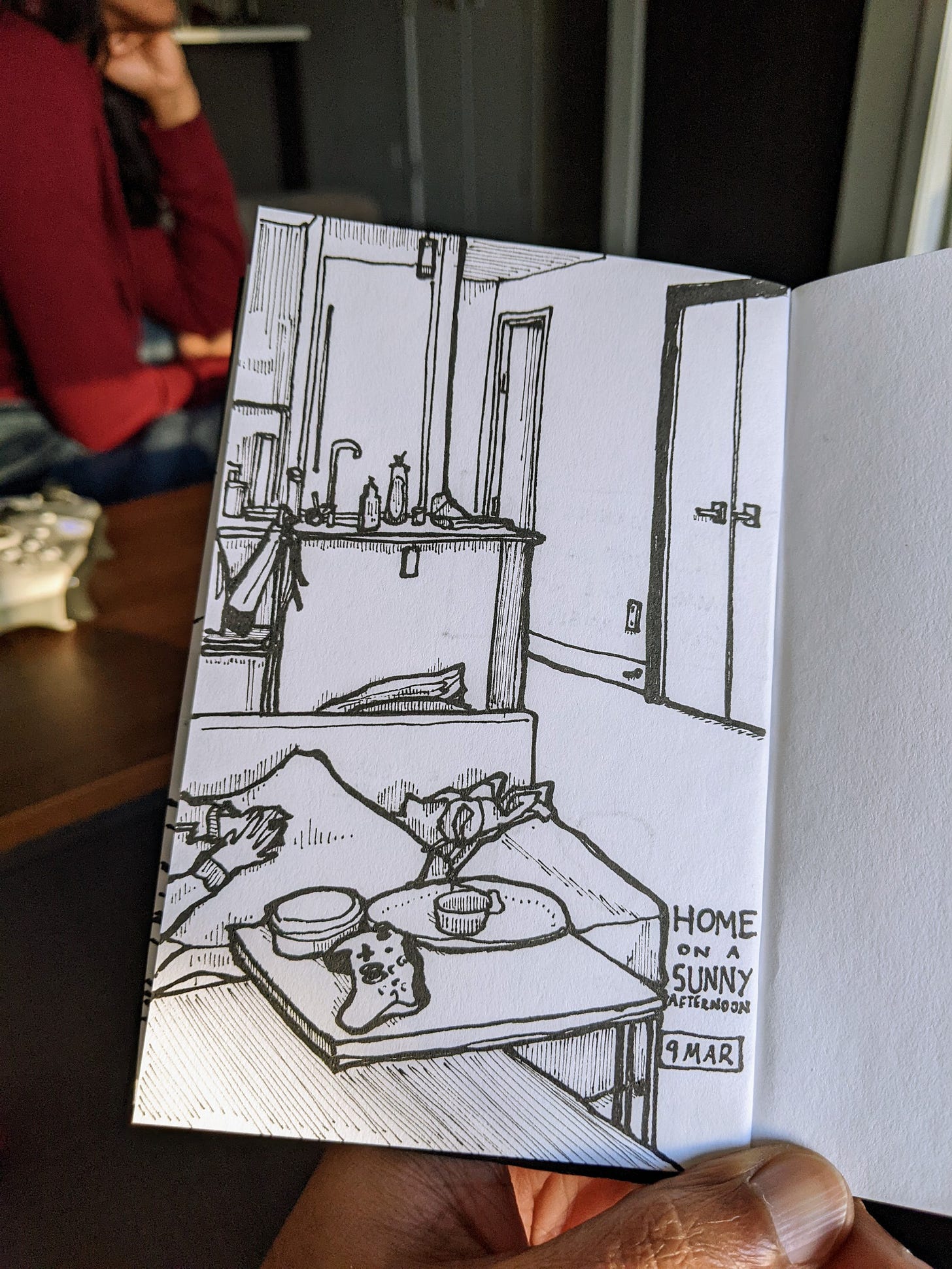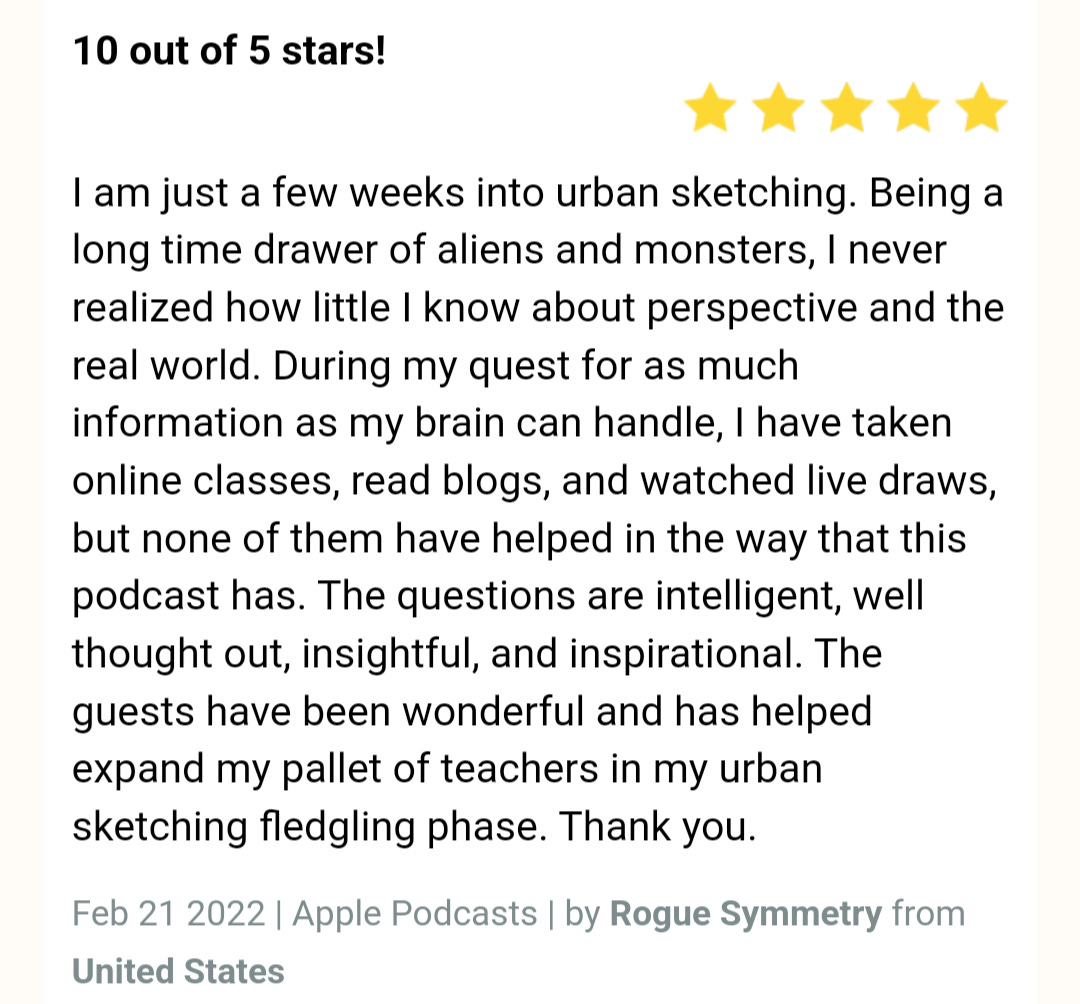107 - The Fude Nib Returns
thoughts about different nib dynamics + the new substack reading experience.
👋🏼 Hello, reader.
The news is out: You can now read The SneakyArt Post in the new Substack app for iOS.
With the app, you’ll have a dedicated Inbox for my Substack and any others you subscribe to. New posts will never get lost in your email filters, or stuck in spam. Longer posts will never cut-off by your email app. Comments and rich media will all work seamlessly. Overall, it’s a big upgrade to the reading experience.
The Substack app is currently available for iOS. If you don’t have an Apple device, you can join the Android waitlist here.
I like having a dedicated space for my subscriptions. And with the app I find myself reading more newsletters with greater regularity.
But if you prefer The SneakyArt Post in your inbox, I absolutely endorse that decision too. I have some publications that I want in my inbox. They make it a nicer place to visit!
When you use the app, you get the option to turn emails on or off. See what you like and feel free to change anytime.
Okay, now let’s talk about fountain pens.
✒️ The Prodigal Fountain Pen Returns
This week, as I unpacked the boxes with my art supplies, I came across an old friend.
I have been using the Lamy Safari so regularly that I think I had forgotten I owned other fountain pens as well. But the Sailor fountain pen is the most unique of them all, because of its fude nib.
I heard about fude nib fountain pens from other urban sketchers and decided to get one after seeing Marek Badzynski use one. Listen to us chat about urban sketching on Episode 9 of the SneakyArt Podcast.
Having been reunited with my Sailor fude nib fountain pen, I filled it with ink and made a quick sketch this week, just before fixing dinner.
Above, spot the different line-widths. Everything was drawn with the fude pen.
The fude nib is a bent nib. If you rest the tip against the page, you get a fine line. If you change the angle of contact so that the wider edge touches the page, you get a much thicker line. By dynamically adjusting your angle of contact with the page, you can get a range of line-widths.
🖌🖋 A weapon of choice
Because I work in lines, putting down different line-widths is important. And because I am minimalistic, I like to do this with as few tools as possible. SneakyArt is made with just two pens and a sketchbook. If I use the fude nib, I don’t even need the other pen.
I think a lot of people feel obligated to use certain tools when starting to draw or paint. Sometimes the choice is motivated by what others around them are doing, and in some cases people think they don’t even have a choice at all.
For example, I used to think one could only be an artist if painting with oil on canvas.
The wonder of being alive today is that we have access to all the different tools and mediums in the world. So we have the freedom to pursue any art form that makes us curious. We have the freedom to keep exploring, and switch to another thing entirely if we find it more interesting. We have the freedom to find what works best for us.
Whenever I think about freedom, I play a little game of substituting the word with responsibility. This game of dichotomous word-play does interesting things to ideas in my mind.
As with the paragraph above -
The wonder of being alive today is that we have access to all the different tools and mediums in the world. So we have the responsibility to pursue any art form that makes us curious. We have the responsibility to keep exploring, and switch to another thing entirely if we find it more interesting. We have the responsibility to find what works best for us.
One of my great artistic heroes is the Korean illustrator Kim Jung Gi. If you don’t know his work, please google him right now. He often uses a long brush pen, achieving great variations in line-width from just that single tool.
But I have found brush pens nearly impossible to use.
Brush pens offer dynamic line-widths as a function of pressure applied. The more you press down, the greater the surface of the brush in contact with the page, and the thicker the line. I find it difficult to consistently maintain the light touch necessary for a thin line. This may be because I draw with my palm resting on the page, and am more used to manipulating from the wrist than the shoulder. I believe artists who stand while painting find brush pens easier to use. I touch upon this subject in Episode 34 of the Podcast with Shari Blaukopf.
Brush pens work based on pressure variance. But the fude nib works based on contact angle variance. I find I am better suited to the latter.
Of course, this does not mean I am done exploring all the creative paths that weave through bad drawings and unfamiliar tools. It is essential to spend time outside my comfort zone. Next month’s podcast episode is with a fascinating guest who works in different styles, with different media, for different but specific reasons. It is an inspirational conversation that has reignited my curiosity to try new styles and mediums. More about it soon!
❤️ A podcast review that made my day
Thanks for reading. I am glad to have your time and attention. See you next week!












your magic is not telling your readers the nib is fascinating. No, your magic is leading us to the place where we can decide for ourselves whether it's fascinating or not. And the thing is, it's usually just that! Look for an email soon
thanks
Ric
I think I’m overthinking every time I start to draw to the point that I can draw simple objects and subjects. I have been drawing since October last year, and have created some portraits (I don’t know why but I find that portraits are better to draw?).
Reading and following your work has jolted me to get back to basic and draw the simplest of things.
🙏🏽